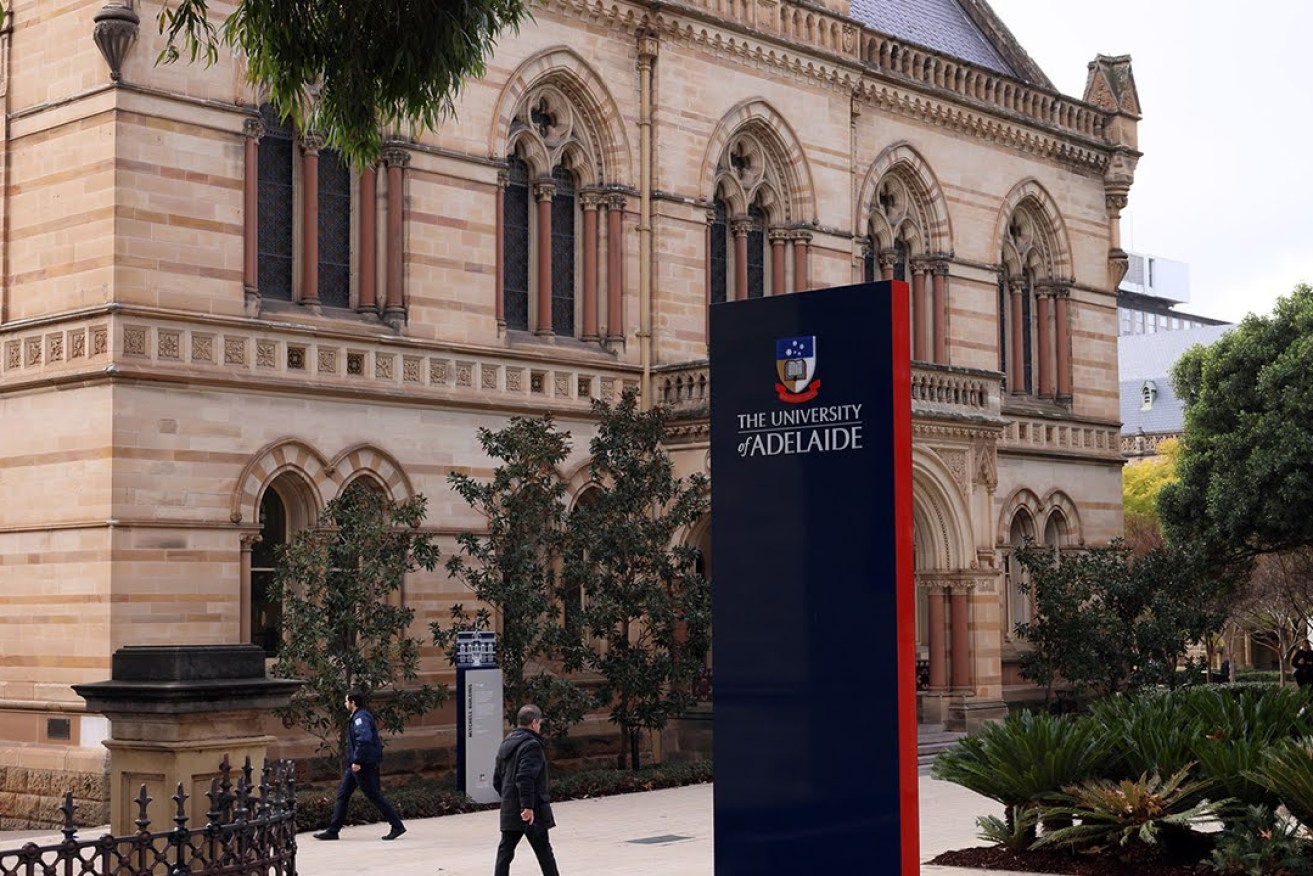Universities, students paying price of shift to corporate education
The University of Adelaide’s decision to slash more jobs and “underperforming” courses due to a budget shortfall is testament to the corporatisation of higher education by federal governments as they withdrew funding support. Hannah Forsyth and Geoffrey Sherington explain that the die was cast long before the pandemic.

Photo: Tony Lewis/InDaily
Universities struggle to understand why the government doesn’t love them.
Since COVID, universities have lost billions of dollars and shed over 17,000 staff. The government excluded them from Jobseeker, which threatened their viability for teaching and research.
Universities train everyone from primary teachers to corporate bankers. Until recently, universities were the country’s third largest exporter. Their research underpins economic innovation and COVID recovery.
So why has the government been letting them suffer?
It may be as simple, journalist George Megalogenis argued in the most recent Quarterly Essay, as a harsh dating maxim. The government is just not that into them.
It was this problem that led the founders of Australia’s higher education sector to build institutions to protect the truthfulness of academic research, the rigour and openness of scholarly debate and the standards applied to learning and teaching. They were not perfect, but it is worth understanding them.
Why does the government hate universities?
Some, like Megalogenis, believe the Morrison government identifies its job as being re-elected rather than governing. And so politicians see universities as ideological opponents rather than manufacturers of ideas and educated workers.
Debates around free speech and religious freedom suggest Morrison may have little personal sympathy for the values associated with secular institutions committed to academic freedom.
The free speech issue is based on claims some conservative ideas are being “cancelled” on campus. One of these was sex therapist Bettina Arndt’s lecture series, which attracted student protests when she argued, contrary to reports, that women are not in fact at risk of rape on campus.
After these protests, in November 2018, The Morrison government asked former High Court chief justice Robert French to lead an inquiry into free speech on university campuses.
Menzies protected unis from government
It was Liberal Prime Minister Robert Menzies — who served his second term from 1949 to 1966 — who created a funding system for universities. In fact, his reforms shaped Australian higher education.
He insisted there should be some protection for universities from political interference.
In the middle of the Cold War, which began as the second world war came to a close, university independence was a key distinction between democracies and authoritarian countries. Cruel and unethical Nazi science and false and misleading Soviet research had revealed the risk of leaving university funding in the hands of politicians.
The inquiry Menzies commissioned in 1957 wrote in its report that even at “inconvenient moments”:
a good university is the best guarantee that […]somebody, whatever the circumstances, will continue to seek the truth and make it known.
The result was the Australian Universities Commission. This was a statutory body which made recommendations to the Commonwealth government for funding to individual institutions. It was known as a “buffer body”, intended to protect higher education from capricious politics.
Menzies saw non-democratic universities overseas were a disservice to their nation’s agricultural systems, cultural and literary traditions and political-economic agility.
It was not that Australian politicians in the 1950s were particularly averse to universities. But the risk of political interference was clear in the heightened global climate, and Menzies was determined to put in a structure to promote “democratic freedom”.
The ALP dismantled the protections
In the 1980s, Bob Hawke’s Labor government minister John Dawkins expanded higher education as the foundation for economic reform. This led to an overhaul of the underlying structure, and financial support that was established in the 1950s.

Hawke government minister John Dawkins dismantled the university buffer body.
Wikimedia Commons
Among these reforms was the dismantling of the buffer body. Bureaucratic leaders like Peter Karmel warned Dawkins at the time this was dangerous.
But Dawkins did not think it mattered, likely imagining other politicians, like him, would want a good university system.
Universities have no buffer now
The Dawkins reforms pushed universities to increased commercial behaviour. Academic leadership was replaced by corporate-style management. In time, university leaders earned CEO-level salaries and bonuses. Although these were based on levels of productivity achieved by very low wages paid to casual academics, governments believed these salaries showed universities had money to spare.
Such beliefs have allowed politicians to behave ungenerously towards universities. With no buffer body to stop them, politicians are free to take out petty grievances such as increasing the cost of some humanities degrees. They are also free to appease small interest groups, like adherents of far-right conspiracy theories who believe cultural Marxists are destroying Western civilisation.
This risks the integrity of the higher education system Robert Menzies built. He wanted universities to be democratic institutions.
In the Cold War context, Australian universities were built to be relatively immune to the vagaries and vested interests of political leaders. They were not perfectly protected, as generations of left-wing scholars found.
Nevertheless, it was harder than it is today to impede higher education’s work towards the research and training we need.
Hannah Forsyth, Senior Lecturer in History, Australian Catholic University and Geoffrey Sherington, Emeritus Professor, University of Sydney
This article is republished from The Conversation under a Creative Commons license. Read the original article.
![]()




